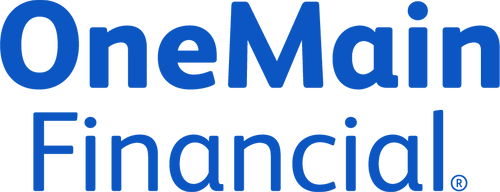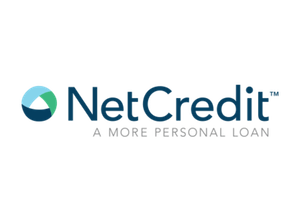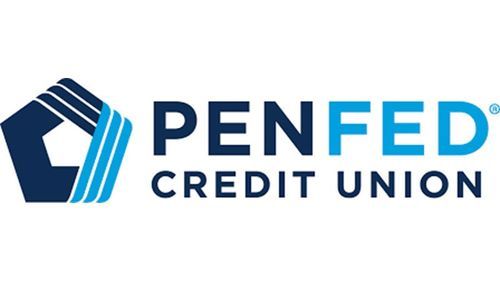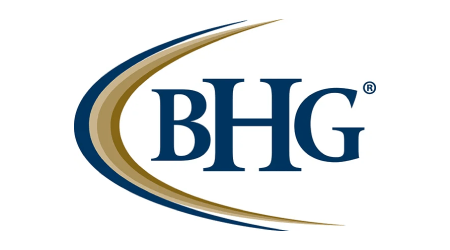The best loan for your roof replacement
See roof financing rates without affecting your credit score
Benefits of our financing
Checking rates won’t affect your credit score
Funding in as little as 24 hours
Zero equity
Fixed monthly payments
Hearth, as seen on

Find the right lending partner for you
If your roof repair or replacement is urgent, Hearth can help you find the right loan for your roof.
Complete our 60 second form, and we’ll show you personalized rates from multiple lending partners. You’ll be able to find savings by comparing roofing monthly payments and rates from several providers. Using Hearth is free, and will not affect your credit score.
You can learn more about personal loans for home improvement by reading our comprehensive guide.
Personal roof loans have the following features:
- No home equity requirement: If you get sick or lose your job and can’t pay back your loan, you won’t be at risk of foreclosure. However, personal roof loans do have higher rates than options secured by your home equity.
- Rapid funding: If your project is urgent, then a personal loan may be your best option. Personal loan providers can approve you, then transfer funds, in as soon as 24 hours.
- No prepayment penalties: Personal loan providers won’t penalize you for paying back your loan ahead of schedule.
- Fixed monthly payments: Because personal loans have fixed interest rates, your roof monthly payments won’t change. Fixed monthly payments will help you create an accurate budget for your project.
Personal loan providers look at 3 factors to determine whether to qualify for you for a roofing loan:
- Your credit score: Because personal loans don’t use any home equity, your provider will need to know that you can pay back the loan. The better your credit score, the lower the rates you’ll pay. You’ll likely need a credit score of at least 640 to qualify, but if you’re looking for roof financing for bad credit, you may still be in luck. Some providers may qualify you with a credit score as low as 500.
- Your income: Personal loan providers want to know your income to determine whether you’ll be able to afford monthly payments. After getting pre-qualified, you may have to submit some form of income verification such as a W-2.
- Your current debt: The more debt obligations you currently have, the tougher it will be to afford monthly payments. Lenders will look at the ratio of your debt to your income to make a decision about whether to approve you.
Here are some of the roofing projects you should consider for a personal loan:
Financing a new roof:
If you’re in a hurry, a personal loan can be a great financing option for a new roof. Roof replacements can cost between $3,000 and $10,000. (Check with a professional to get a more accurate cost because complex roofing projects may cost more than $10,000).
Making a major roof repair:
Most DIY roof repairs are probably too cheap for a personal loan; new asphalt shingles can cost a couple hundred dollars. You may want to look into 0% APR credit cards for these projects. But for major, multi-thousand dollar roof repairs, a personal loan could be the right choice for you.
Upgrading your roof before selling your home:
If you’re trying to get your home on the market, having a new roof could help you close faster. Personal loans could be a great fit for this type of upgrade.
Paying a homeowners insurance deductible:
Homeowners insurance plans kick in coverage after you pay a deductible that ranges from a few hundred to a few thousand dollars. Even if your insurance will cover your roof, you may need a roof replacement loan just to cover the deductible.
Not set on a personal loan? Read on to learn about other roof financing options.
Note: If you’re a roofer, visit our contractor financing page to learn more about our financing program.
Here’s what you need to know about financing a roofing project
You’ve been planning on replacing your roof, fixing a leak, installing new flashing, or performing another type of roof repair. Before you can start your project, you have some big questions to answer:
How will I pay for a new roof or roof repair project?
How can I pick a roofing loan or other financing option that doesn’t mess up my financial plan?
There are financing options available for your roofing project, but that doesn’t mean every one is the right fit for you.
We’ve worked closely with personal finance experts to help recommend you the right roof financing options.
In the rest of this article, you’ll learn about different roofing loans and lines of credit, how to decide between them.
When should I get financing?
You should wait and save cash whenever possible to pay for your roofing project. It’s cheaper, and you won’t pay extra in interest and fees.
However, if you’re like many people who need a roof repair or replacement, you probably can’t sit around and wait to save. A leaking or otherwise damaged roof means you need to find roof financing quickly.
Be sure to consult your homeowners insurance policy
Your insurance may cover your roof’s damage if it was caused by something beyond your control–say a storm or fire. On the other hand, your insurance probably won’t cover any problems related to a lack of maintenance or natural wear and tear.
You should check your policy or call your insurance company to find any exclusions, coverage limitations, etc.
Coverage from homeowners insurance doesn’t necessarily mean you won’t need financing if you don’t have cash. You may have to pay a deductible before your coverage kicks in and, without cash saved, financing will be your best bet.
In the next two sections, we’ll show you how you can finance your roof project.
Lending options
Roofing loans have a key advantage: you get the money you need upfront.
Although this lack of flexibility may seem cumbersome, it actually incentivizes you to map out a detailed budget before you begin. Houzz found that few homeowners stay on budget during renovations, which leads to overspending.
Before getting the loan, you should know how much financing you’ll need for your roof replacement. We recommend consulting with 3 or more professionals to get a robust estimate.
The right roof replacement loan option for you depends on two factors:
- Your home equity: If you don’t have much equity in your home, then you’ll have to consider an unsecured option such as a personal roofing loan. Unsecured means the financing option doesn’t require your home equity as collateral.
- Your timeframe: If you don’t already have a line of credit open with your bank, then it could take 4-6 weeks to apply for and receive funds for your new roof. This timeframe is too long for many urgent roofing projects.
Our Homeowner’s Guide to Home Improvement Loans, written in consultation with several personal finance experts, will teach you more about finding the right loan for your roof replacement.
Let’s take a look at each loan option and see how your home equity and timeframe should influence your decision:
Personal loans
If you’re on a tight timeframe and don’t have enough equity in your home, then a personal roof loan may be the right roof financing choice for you. We described above how Hearth can help you find the right personal loan for your roof.
Home equity loans
If you have more time, you may want to consider a home equity loan. These loans will have lower rates than personal loans, but they can take 4-6 weeks to approve. You’re also likely to pay hefty closing costs, and could face prepayment penalties if you pay the loan back early.
Like personal loans, home equity loans are also good for financing a roof replacement or major repair.
Important note: roof financing options secured by your home equity are tax deductible, while those that do not require home equity are not.
FHA 203(k) and other government loans
Your state and the federal government may have special programs for some types of roof repairs. You may also be able to qualify for a roof repair grant. Visit our loan page to learn more.
Lines of credit
Unlike roofing loans, lines of credit give you more flexibility to borrow as needed. You avoid the pitfall of paying interest and fees on more money than you ultimately use.
You have two main roof financing options in this category: credit cards and home equity lines of credit. Let’s take a look at each
Credit cards for replacements and repairs
Under the right circumstances, a credit card can be a good option for a roofing project. Credit cards let you borrow money up to a pre-defined credit limit, and if you pay back your balance quickly, you may be able to avoid debt that quickly grows out of control. In this section, we’ll discuss the types of cards we offer, tell you when to consider a credit card, and discuss when you should look elsewhere.
0% APR credit cards. If you have good or excellent credit, you may qualify for a 0% card. These cards have no interest for an introductory period, usually 6 to 18 months. You could finance your new roof without paying any interest if you pay down your balance before this introductory period ends.
Explore 0% home improvement credit cards through Hearth.
Roofing credit cards for bad credit. If your credit needs work, you probably want to save cash or take the time to repair your credit score before considering a new roof project. But sometimes you can’t wait. If you have an emergency leak or other problem, then a credit card may be your only option.
Be sure to develop a plan to pay down the card as quickly as possible because interest can quickly grow.
Explore credit cards for bad credit through Hearth.
When should I use a credit card for my roofing project? You can use a credit card to finance any roofing project from repairing a few broken shingles, to fixing flashing around your chimney, to installing a new mobile home roof. If you are confident you can pay back the card quickly, then a card could be a good fit.
Otherwise, you may want to save cash unless you just can’t wait.
Borrowing from a home equity line of credit
Like a credit card, you can borrow from a home equity line of credit as needed up to a predefined limit. However, unlike a credit card, your bank uses your home equity as collateral for your loan. In return for offering you lower rates than you’d find elsewhere, your bank can seize your home if you default on the loan.
Like home equity loans, using a secured line of credit to repair or replace your roof is tax deductible. Home equity lines of credit could be a great option if you already have one open with your bank, and if you’re confident you could make payments.
Roofing professionals that offer payment options
Roofing professionals may offer financing to help you afford your project.
Some companies, such as CCR Roofing, use financing solutions like Hearth that let consumers compare several options to find great rates.
Other contractors may just give their customer one or two financing options. If you’re going to use your contractor to find roof financing, make sure the company uses a financing partner that lets you compare across several options so you can find the best rates.
Replacement and repair tips
Here are five easy tips to follow for roof renovation success:
- Get multiple estimates: Getting at least three bids from contractors gives you an accurate picture for your roof remodel cost. Multiple bids also give you negotiating power, so you can land the contractor you want. Even if you plan to DIY, you may want to get a professional’s input so you can accurately estimate your roofing costs.
- Consider the added home value: According to Remodeling Magazine, roofing replacement adds, on average, roughly $14,000 to your home. Try to keep your costs below this amount to recoup as much as possible when you sell your home.
- Seek approval from local authorities: Depending on the type of materials you need for your roof, you may need to alert your HOA. Most towns also require building permits for roof replacements. Without a permit, your roof warranty is likely void.
- Splurge on important details: Make sure you talk with your contractor about proper ventilation, any damage to the wood beneath your shingles, and extra protective coverings. Going the extra mile now will save you a tiresome repeat roof renovation in the future.’
Visit the links below if you need financing for other home improvement projects:
Roof financing FAQs
How long can you finance a new roof?
Financing terms for a new roof replacement are generally between 3 – 12 years, depending on your credit history, debt-to-income ratio, and additional financing factors
What credit score is needed for a roof?
Our network of lenders are able to work with most credit profiles. WIth options for credit scores as low as 550.















